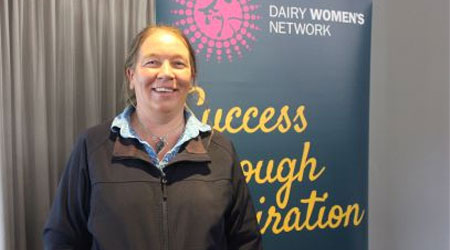Ashburton farmer’s secrets to calf rearing success
Kathryn Stoddart’s key goal every season is to rear happy, healthy calves that become a part of a happy, healthy and productive milking herd. She prides herself on never losing a replacement and puts it down to three key things; gold colostrum immediately after birth, keeping calf navels dry and offering calf meal from day one.
Kathryn’s family business Strath Isle Farms in Ashburton operates across a 170-hectare platform milking 600 cross bred cows at peak. They also have a 110-hectare support block where they keep their youngstock and manage winter grazing.
Her team typically rears 130 replacements every year along with 15 jersey bulls that they use for natural mating and 25 beef bulls for sale.
“I remember being asked by someone once about how many replacements we lose. I just stared at them with a blank face and said, we don’t,” says Kathryn.
There are three key things she does for her calves in the first 24 hours that she believes sets them up for a lifetime of success.
“Newborn calves need a huge amount of care and attention in their first 24 hours of life,” says Kathryn. “We feed them at least four litres of gold colostrum in the first eight hours including two litres in the paddock before they are picked up. Within the first 24 hours we also spray their navels at least four times with 10 percent iodine to get them dry. The final crucial step is making calf meal available to them in their calf pens from day one.”
Kathryn says wet navels are an entry point for bacteria and infection. She learned the hard way when she started out calf rearing with 10 calves getting infections.
“We got the vet in and really doubled down after that season. We thought we were doing well but we realised we could make improvements. Now we spray navels every time we handle the calves in the first 24 hours.”
Kathryn says calf rearing is a team sport and the whole crew needs to be on board.
“We all work together to rear happy healthy calves,” says Kathryn. “It’s better for the calves and better for us with less work when there is already so much going on in those first six weeks of calving.”
Offering calf muesli to newborn calves from day one may seem premature, but Kathryn knows her stuff.
“While at that stage of a calf’s life they are not eating enough to provide them with any significant energy, it gets them used to it,” says Kathryn. “They nuzzle it with their noses out of curiosity, and it encourages them to try it. It gets them onto muesli early so we can start developing their rumen as soon as possible.”
After the initial gold colostrum feeds, the calves are fed milk twice a day. But Kathryn’s goal is always to get them onto once a day feeding as soon as possible to encourage calves to eat more ruminant feeds such as muesli and grass. The bonus is it also limits the risk of nutritional scours.
“We’re rearing a ruminant animal, not a milk fed animal that struggles to grow once it’s weaned off milk. We really believe in getting that calf meal into them as early as possible,” says Kathryn.
“It’s been a game changer for our calf rearing. We have had a couple of years where some pens didn’t have it from day one. Those calves were a lot slower to get onto it and transition from milk.”
“Our calves love eating Seales Winslow meal and grow well on it; the resulting cows have a great rumen to fuel milk production. Seales Winslow is a high-quality product that we trust to get the results with our calves, and keep them happy and healthy,” says Kathryn.
Kathryn’s calves are slowly weaned between eight and 10 weeks of age once they are eating 1kg of meal each day. Their average weaning weight is 82kg and Kathryn’s calves hit 100kg at 12 weeks.
She then feeds her replacements pellets until the calves are 120kg when they are shifted to the runoff block about a month before Christmas.
Keeping track of calf weights is a crucial part of the job to keep an eye on calf progress, so Kathryn weighs her calves monthly.
“It’s a very tight timeframe to get calves to grow into future milkers, so we don’t want any growth issues along the way. Weighing our calves every month makes sure they’re staying on track,” says Kathryn.
“It’s a massive advantage having R2 heifers coming into the herd close to target weight. We see better milk production in their first year and great in-calf rates. Those happy healthy calves become happy healthy members of our milking herd.”


